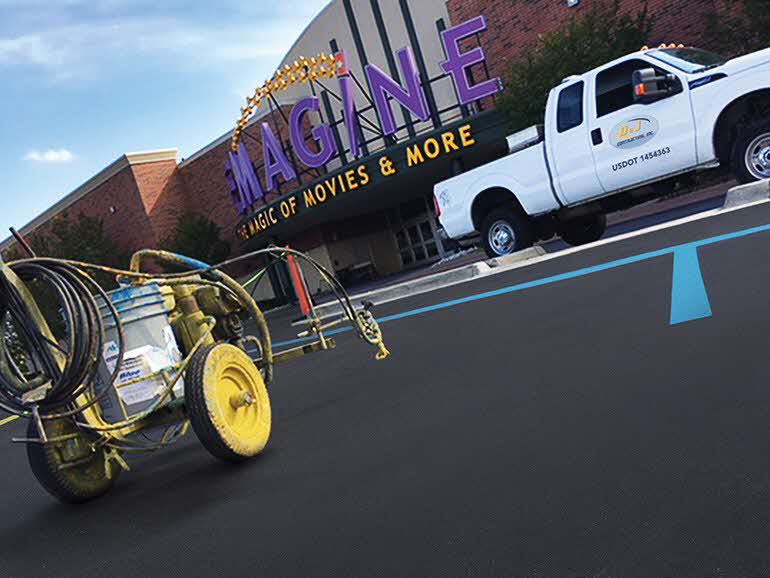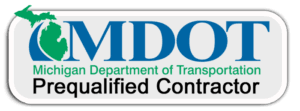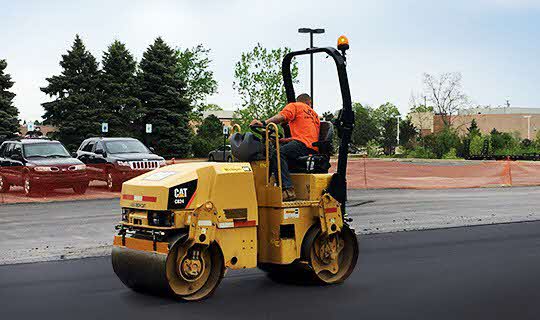Concrete Grindings Anchor Bay Shores Michigan
We Are Locally Owned
& Operated For 36 Years
Contact Us Today!
About Concrete Grindings
Introduction
When it comes to renovating commercial properties, one aspect that often takes center stage is flooring. Selecting the right kind of floor not only enhances the aesthetics but also directly impacts the durability, maintenance costs, and safety standards. The answer to all these concerns lies in concrete grindings, our primary discussion topic. In this detailed guide, we will delve into the world of concrete grindings and discuss why it’s beneficial for commercial properties. We will answer all your queries related to concrete grinding floor and in the process, seamlessly integrate our primary and supporting keywords. Strap in for an engaging and informative journey.
Understanding Concrete Grindings
Concrete grinding is a method used to smooth and polish concrete surfaces. For commercial properties, a smooth and seamless concrete grinding floor is a smart and cost-effective solution. Concrete grindings eliminate surface irregularities, resulting in a uniform floor that reduces accidents and wear & tear on machinery and vehicles. If you are located in a region renowned for its commercial hubs, concrete grindings is certainly a consideration worth making.
Benefits of Concrete Grindings
Understanding concrete grindings and their benefits can be the first step in transforming your commercial property. Concrete grindings can significantly help enhance the appearance, safety, and functionality of your property. Let’s delve into the main benefits of this procedure:
Durability
Concrete floors have a reputation for their robustness and longevity. When these floors undergo concrete grinding, they become even more resilient, capable of withstanding heavy foot traffic and machinery. Terms like chipping, staining, or disfigurement are barely relevant if you consider a concrete grinding floor for your commercial property.
Low Maintenance
Unlike other flooring types, concrete grinding floor requires minimal maintenance. After the grinding process, the floor hardly needs any extensive upkeep except normal cleaning. It makes commercial spaces like warehouses, factories, or retail stores cost-efficient and easy to maintain.
Safety
Thanks to the smooth finish, concrete grinding floor reduces the risk of accidents. Moreover, the polished surface reflects light and improves the visibility of your space, enhancing the safety quotient even further.
Concrete Grinding Process
The process of concrete grinding involves using heavy-duty machinery fitted with diamond-impregnated disks that gradually grind down the concrete surface. The thickness and grit of the disks vary depending upon the desired finish. Learning about this process will ensure you make an informed decision about whether to opt for a concrete grinding floor.
Concrete Grinding Tips
Here are a few practical tips to keep in mind:
Hire professionals: Concrete grinding requires specialized equipment and know-how. You’ll achieve best results and the least disruption by hiring a professional concrete grinding team.
Choose the right finish: Depending on your requirement, you can opt for a finer or coarser finish. Discuss this with your service provider for a result tailored to your needs.
Conclusion
Considering the beneficial attributes – durability, low maintenance cost, enhanced safety, and aesthetic appeal – concrete grindings for commercial properties are indeed an investment worth making. Armed with this detailed guide, you are now in a good position to make a sound decision when it comes to choosing flooring for your commercial property.
We encourage you to contact us for further consultation and top-of-the-line concrete grinding services! With our experienced professionals at your disposal, rest assured your commercial property will command admiration and performance that stands the test of time.
Contact Us Today for a FREE
Concrete Grinding Quote






About Anchor Bay Shores, Michigan
History
Chesterfield Township was originally established as a general law township in 1842. It became a charter township in 1989.
The original European-American settlement in the area was a hamlet called Chesterfield, first settled in 1830. When the Grand Trunk Railway came through in 1865, it stimulated the development of businesses in the hamlet. It had a post office from 1875 until 1907, but has since lost its specific identity.
Geography
Chesterfield Township is in eastern Macomb County and is bordered on the north by Lenox Township and the village of New Haven; on the east by Ira Township in St. Clair County, and by the village of New Baltimore; on the southeast by Anchor Bay, which is a part of Lake St. Clair; on the south by Harrison Township; and on the west by Macomb Township.
According to the United States Census Bureau, the township has a total area of 30.6 square miles (79 km), of which 27.6 square miles (71 km2) are land and 3.0 square miles (7.8 km), or 9.85%, are water.
Much of Chesterfield Township is dominated by suburban subdivisions and shopping developments; its population is increasingly diverse, reflecting area demographic changes. In 2010 some 89% of the population identified as non-Hispanic whites; in the late 20th century, the largely rural township had an even higher percentage of whites. Anchor Bay influences the southeastern part of the community, where many pleasure boats, docks, and marine-related businesses can be found.
Communities
There are nine unincorporated communities in the township and no incorporated villages:
- Anchor Bay Gardens is located off Jefferson Avenue at Sunrise Street and Jans Drive (42°38′34″N 82°48′45″W / 42.64278°N 82.81250°W; Elevation: 571 ft./174 m.).
- Anchor Bay Harbor is located on Jefferson Avenue south of Anchor Bay Gardens, between Sugerbush and Cotton roads (42°39′19.1″N 82°47′56.7″W / 42.655306°N 82.799083°W; Elevation: 577 ft./176 m.).
- Anchor Bay Shores is located off Jefferson Avenue, south of Anchor Bay Harbor between William P. Rosso Highway and 21 Mile Road (42°38′08″N 82°49′00″W / 42.63556°N 82.81667°W; Elevation: 581 ft./177 m.)
- Chesterfield is located on M-3 from 23 Mile Road to 22 Mile Road. (42°39′46″N 82°50′33″W / 42.66278°N 82.84250°W; Elevation: 607 ft./185 m.)
- Chesterfield Shores is near the border with City of New Baltimore north of Jefferson Avenue and south of M-29/23 Mile Road (42°40′12″N 82°45′41″W / 42.67000°N 82.76139°W ; Elevation: 587 ft./179 m.).
- Fairchild was located in the southern portion of the township. It had a post office starting in 1906.
- Lottivue is located between Jefferson Avenue, Lake Saint Clair, Brandenburg Park and Schneider Road (42°39′34″N 82°45′43″W / 42.65944°N 82.76194°W ; Elevation: 577 ft./176 m.).
- Milton is located at Gratiot Avenue and 24 Mile Road (42°41′21″N 82°49′19″W / 42.68917°N 82.82194°W; Elevation: 607 ft./185 m.) and once was a station on the Grand Trunk Railroad. The first post office in the township was established here in 1837 in the house of Robert O. Milton, with the name of “New Haven Post Office”. When this was moved to New Haven, Alfred D. Rice established another post office in Milton. That post office closed at some point, and another was opened in January 1856, with Edmund Matthews as postmaster. This office operated until July 1904. Milton was home to a school, three churches, a doctor, a blacksmith, and a couple of saloons. The last saloon survived until 2004, when it was torn down, at that time it was known as the “Teddy Bear Bar.” The school, known as Milton School, was incorporated into another building, which was torn down in 2002.
- Point Lakeview is located southwest of Lottivue between the Salt River and Lake Saint Clair.
- Sebille Manor is located northwest of Anchor Bay Harbor between Sugarbush and Donner roads (42°39′40″N 82°48′44″W / 42.66111°N 82.81222°W; Elevation: 587 ft./179 m.).
Demographics
As of the 2010 census Chesterfield Township had a population of 43,381. The racial and ethnic composition of the population was 89.5% non-Hispanic white, 5.3% African American, 0.4% Native American, 1.0% Asian, 0.1% non-Hispanics from some other race, 1.8% from two or more races, and 2.4% Hispanic or Latino.
As of the census of 2000, there were 37,405 people, 13,347 households, and 10,076 families residing in the township. The population density was 1,341.7 inhabitants per square mile (518.0/km2). There were 13,967 housing units at an average density of 501.0 per square mile (193.4/km). The racial makeup of the township was 93.43% White, 2.97% African American, 0.40% Native American, 0.76% Asian, 0.02% Pacific Islander, 0.87% from other races, and 1.56% from two or more races. Hispanic or Latino of any race were 2.52% of the population.
There were 13,347 households, out of which 43.1% had children under the age of 18 living with them, 62.1% were married couples living together, 9.5% had a female householder with no husband present, and 24.5% were non-families. 19.2% of all households were made up of individuals, and 4.7% had someone living alone who was 65 years of age or older. The average household size was 2.78 and the average family size was 3.22.
In the township 29.8% of the population was under the age of 18, 7.9% from 18 to 24, 36.4% from 25 to 44, 19.3% from 45 to 64, and 6.6% was 65 years of age or older. The median age was 33 years. For every 100 females, there were 98.5 males. For every 100 females age 18 and over, there were 95.6 males.
The median income for a household in the township was $61,630, and the median income for a family was $69,554. Males had a median income of $50,834 versus $30,275 for females. The per capita income for the township was $24,410. About 3.9% of families and 4.7% of the population were below the poverty line, including 6.8% of those under age 18 and 3.8% of those age 65 or over.
Government
The township is governed by a board of trustees and a township supervisor. Heavenly Ann Frederick gained presidency in the 2020 election and still holds office.
Fire department
Chesterfield Township is served by a mix of career and part-time firefighters, under the direction of the Public Safety Director, and supervision of a full-time chief. The department staffs two stations 24/7.
Education
Chesterfield Township is primarily covered by two school districts: the Anchor Bay School District, and L’Anse Creuse Public Schools. A small portion of the northern part of the township is also zoned to New Haven Community Schools.
Contact Us Today for a FREE
Concrete Grinding Quote
Our Concrete Grinding services are available in Anchor Bay Shores as well as all of Macomb County.
Our dedicated team at D&J Contracting Inc is at-the-ready to provide you with great customer service and first class Concrete Grinding services. Reach out to us at (586) 954-0008 to discuss your Concrete Grinding needs today!